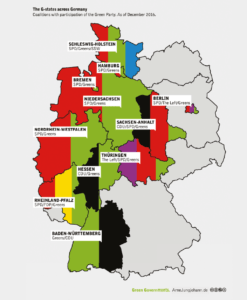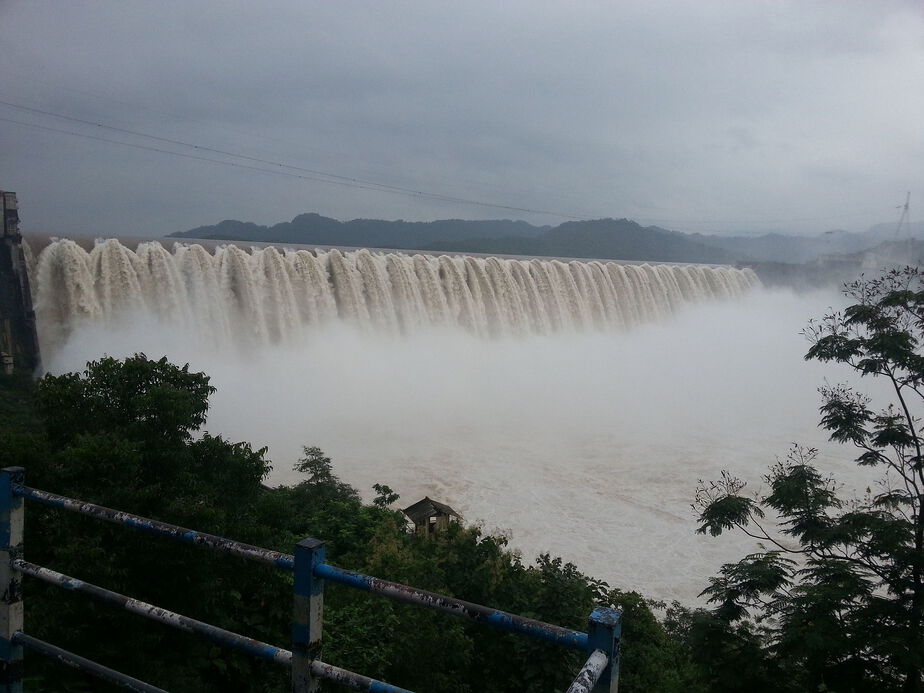Written by Rizowana Hussaini
“Future is Green, Green is Future”. These words greet every visitor of the India Greens Party’s website, one of India’s few political parties whose core focus is on the environment and sustainable development. With the rise of eco-conservatism and green activism, it does not come as a surprise that today, India is seeing the emergence of political parties that consider the needs of the nation’s environment and natural resources first. In fact, one should deem it necessary, especially with the pressing need to tackle climate change and the country’s shoddy record of managing its natural resources.
The Green Movement
The term ‘green’ has historically been used to refer to issues that concern themselves with the environment and its sustainability. It first became popular when workers in Australia launched a ‘Green Ban’ movement in May 1973, under the leadership of Jack Mundey, a trade leader and environmental activist. Here, a slew of workers who refused to work on projects that contributed to damaging the ecological balance. They were referred to as the “greenies”, and this description soon spread to refer to anyone who advocated for sustainable ecological measures.

This ideology soon spread to Europe and erstwhile West Germany where the political party “The Greens” was inaugurated on 13 January 1980. Aware that political parties that advocate for a singular cause often fail to garner popular support, The Greens advocated for a multi-pronged approach that eventually became the ‘Four Pillars of Green Politics’. These include social justice, ecological wisdom, grass-roots democracy, and non-violence. This was further expanded to six pillars, to include sustainability and respect for diversity. These pillars took inspiration from social movements that swept across Western Europe, from the environment and civil rights movements to the labour movements. As such, the design of such a green political party has distinctly progressive roots.

Anyone familiar with the history of India would find a few of these pillars — particularly social justice, grass-roots democracy, non-violence and respect for diversity — were used in the Indian National Movement by Mahatma Gandhi. In Hind Swaraj, Gandhi’s seminal work on the philosophy of mediating between a modern lifestyle and rural roots, he has voiced reservations against an overly consumerist culture, increasing industrialisation and urbanisation. And it is exactly these concerns that today’s environmentalists deal with as well. One could even go so far as to say that the Gandhian ideologies have made a lasting impression on the ecological consciousness of the nation, which can be seen through some famous environmental movements in our recent past.

If one studies our history of protests, they would find most demonstrations and movements have been brought about by those communities who are not a part of daily discourse — farmers, fisherfolk, labourers, and more. The movements they have driven have often given a voice to underlying ecological wisdom and concerns for sustainability that seem to be absent in the middle classes.
It is perhaps this divide between the vociferous cognisance of the working classes regarding these issues and the ignorance of the middle class in favour of a more fast-paced lifestyle fuelled by urbanisation and industrialisation that has prevented the desired rise of an effective green party in India. With challenges such as pollution (air, water, soil), wildlife poaching, loss of biodiversity, preservation and quality of forest cover among others, India’s ecological problems require urgent and serious attention. However, most political parties tend to disregard concerns for the environment in favour of a development-based model that feeds the aspirations of the middle classes, and with the belief that such models can eradicate poverty. A commitment to meeting the regulations for the environment often falls short.
The Need of the Hour?
Green parties in the west have blossomed into strong political forces, especially in countries such as Germany and France. In the case of Germany, the ruling coalition of the two major parties – the Christian Democratic Union (CDU) and the Social Democratic Party (SDP) – led by Angela Merkel has been in power for a good part of the last fifteen years. But The Greens have proved to be a force to be reckoned with, earning seats in 14 out of 16 state legislatures and even forming coalition governments in 9 of them.

India, on the other hand, is just warming up to the idea of a green party. The Indian National Green Party (INGP) was the first party with a specific emphasis on environmental issues and was launched on 7 January 1999. Other political parties followed; Green Party of India, led by Subhas Dutta, was launched in January 2010; the India People’s Green Party started in Jaipur in 2011; the India Greens Party, was launched in November 2018. While the subcontinent boasts of having close to 2,300 political parties, one could easily count the number of green parties on their fingertips.

When one looks at the previous manifestos of the major political parties, issues of the environment often find a place in electoral promises. The Congress, CPI(M) and the BJP have all vouched for protecting the environment, by checking river water pollution, investing in renewable energy systems for low-carbon emissions, making India open defecation free and more. Although it has never claimed to be a green party, the Aam Aadmi Party of Delhi also has green inclination through its foundations in a popular protest movement and its active support for environmental movements and groups like the Narmada Bachao Andolan. The BJP had also promised to institute a permanent task force to protect the tiger and other endangered animals. And yet, with these matters we seem to never move beyond just promises. For instance, the National Ganga Council headed by Prime Minister Modi, whose purpose is to manage and preserve the Ganga river waters, has not met even once since its creation in 2016.
Stronger measures need to be in place to ensure that each individual does their bit to conserve the balance of nature, especially if they are in power. Thus, rallying behind a project that echoes the worries of a motivated and driven workforce is a small but important step in bringing environmental matters into the electoral spotlight. With the six pillars of the environmental movement not being an entirely alien concept, having a political party that acknowledges the gravity of our current situation and works to bring awareness might just be what is required to secure a truly sustainable future. It’s time to open a green chapter in India’s politics.
Featured image courtesy Jaydantara|CC BY-SA 3.0






